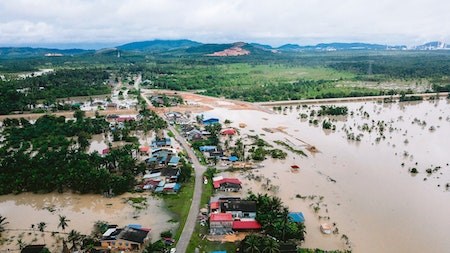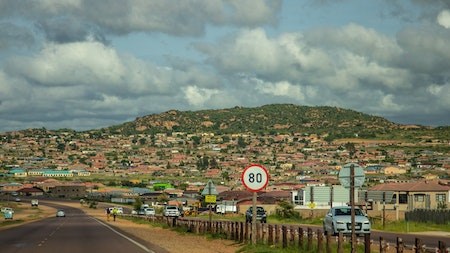The unpredictability of weather events, largely caused by climate change, has an impact on residential properties and the choice of where to live. Greenpeace highlights how floods, droughts, heatwaves, wildfires and cyclones in Africa are occurring at unprecedented rates. South Africa is not immune, having experienced, over the past decade, some extremely heavy rainfall in some parts, droughts in others and even tornados. Flooding, however, is a particular concern.
As the planet warms up due to climate change, the water content in the atmosphere changes. With more moisture available, rainfall events become more intense or disappear entirely, manifesting in droughts. However, these changes are often regionalised.
Heavy rain and flooding
For example, last year’s April rains on the eastern coast saw floods and landslides across KwaZulu-Natal, resulting in death, destruction and homelessness. It is claimed that the two-day rainfall was the equivalent of a year’s worth of rain. Cape Town’s water crisis in 2018 is yet another example, primarily caused by a three-year rainfall deficit, something that only happens, say some experts, once in every 400 years or so.
While extreme weather events may not prevent the desirability of living in one or another location, climatic zones are important to understand how to take care of properties and the influences they have on lifestyles and health. People living with Asthma, for example, can experience more intense attacks if they live in very cold or very hot temperatures. Exposure to extreme heat can also lead to cardiovascular, respiratory, and cerebrovascular disease, say many medical experts.
In this vein, a Swiss technology company investigated air quality in parts of South Africa, revealing that Oudtshoorn in the Western Cape has the best air quality in Africa, with Grabouw (also in the same province) and Niewoudtville in the Northern Cape being the second and third least polluted regional cities.
Sea levels
Health aside, the emerging nature of climate change does raise questions relative to whether an existing property will hold more or less value in the future. For example, if, as is expected, sea levels continue to rise with the melting of ice caps, it may mean that a property that currently meets building line restrictions may not be compliant in the future. As it stands, the authorities are re-delineating coastal setback lines to mitigate this type of future threat.
Also noted is a temporary decline in selling prices after storms, flooding, and cyclones. It may not, therefore, be practical to continue to value homes based purely on economic trends or comparative analysis. Property valuers who are pushed to predict future value will now have to rely on historical climatic data, which is somewhat difficult given the unprecedented nature of climate change impacts.
Insect swarms
Catastrophic Force Majeure events also significantly impact a buyer's perception of value. Few want to live on a possible flight path of swarming locusts, regardless of how perfect a property may be. In May 2022, the largest local infestation in a quarter of a century occurred along the Eastern Cape coastline. Although this devastated primarily farming communities, the pesky insects also impacted towns like Graaff-Reinet.
After heavy rains, infestations of termites are not uncommon. In their search to form new colonies, they create mounds that can accommodate up to several millions of these insects. They feed off a fungus hosted by dead wood, which is the most common material used in residential property roofing structures. Termite homes are often not visible and may actually be in or under the foundation of a property. If left untreated, a home can be severely compromised structurally. Rising temperatures and resulting dryness also increase termites’ appetites, meaning droves would be unleashed from nests.
Droughts
Droughts are a whole different challenge. The effects of dry weather can lead to infrastructure and foundation damage due mainly to how the soil reacts underneath your home. That soil is usually a mix of sand, silt and clay. In a drought region, the water collected by clay evaporates, causing soil shrinkage, which, if left unattended, may cause a home to drop downwards or create a slope in the brick-and-mortar building that compromises its structure.
Compounding this is that when the drought ends and rain starts to seep into the ground, the clay can expand rapidly, push your foundations upwards, and potentially cause flooding in a basement.
Cracks are also common in a drought, either in brickwork or tiling, even drywalling. Window frames may also become stuck or become unaligned in their frames.
When buying, particularly a generational family home, it is worthwhile to investigate the potential of climate change on the environment. While no one can accurately predict an extreme weather condition, it is always better, as is said, to be prepared for the worst!
Writer: Kerry Dimmer




